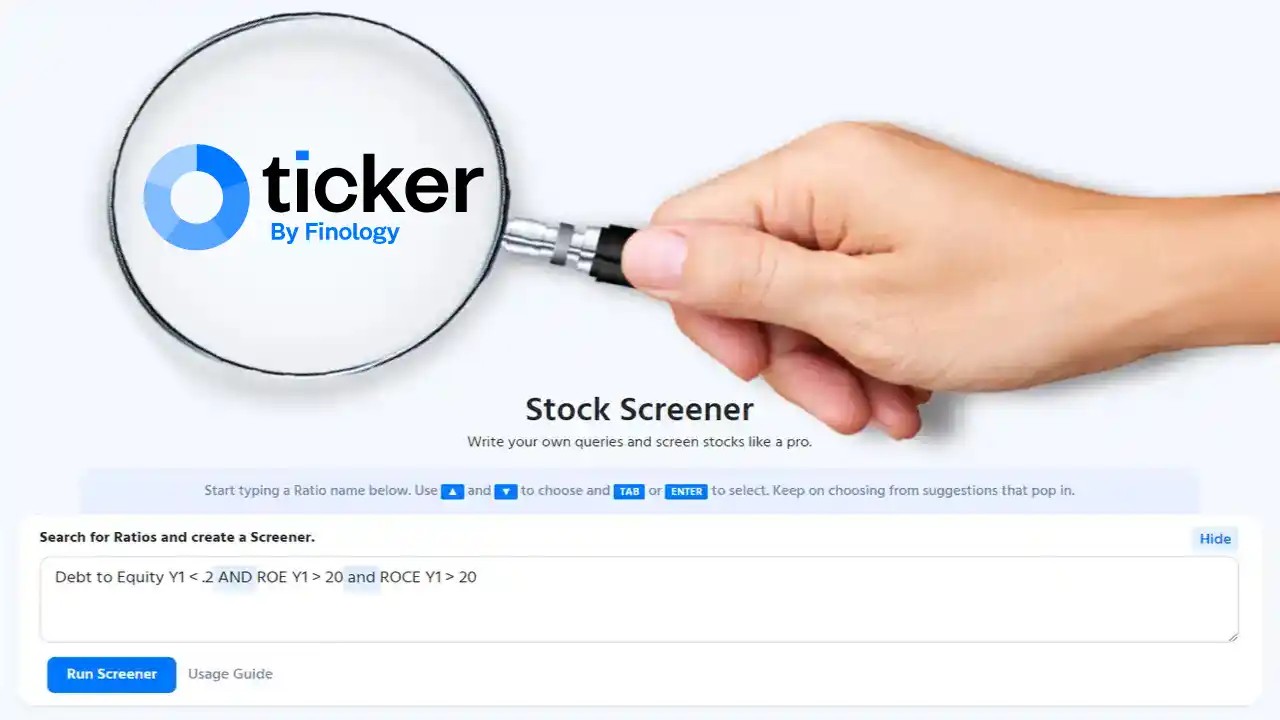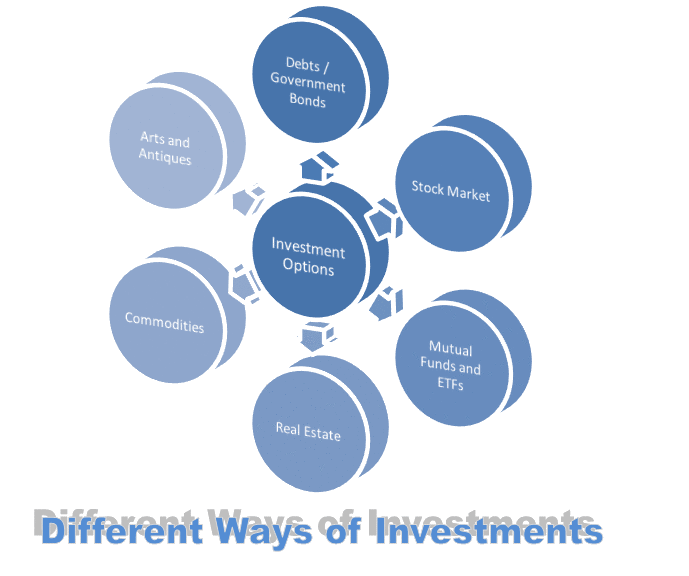I recently gained enough confidence to begin investing. Also I always had my head set on the idea, and I knew that the best time to invest is “now”, not “later”, or “next month”. I guess I just wasn’t getting around to pulling the trigger.
When I did get around to it, I found myself in a spot of confusion, however. There were over 5,000 companies to choose from! Which one should I invest in? Should I invest in one or more?
I also knew that I was not alone in this confusion. With a 32% Y-o-Y increase in retail investors in 2022, stock picking was going to pose a daunting beginning for many.
So I figured, why not help a few of these investors with a little stock-picking guide and a list of the top 5 low-debt, high-return companies? Read on and find out… How to pick good stocks?
You ever go on food delivery websites to order food? Of course, you do! Before ordering, you often look through various restaurants and dishes. You don’t always go in with a game plan; sometimes, your mind is hungrier than your stomach.
Overview
When looking for these prospects, you apply filters to your search to better locate what you’re looking for. What if there was a Zomato for your portfolio, and you could apply filters to the stocks based on what you would look for in a company? Well, that’s where you use Ticker by Finology’s Screener feature!
Here’s a little screen I ran on the website to get some companies that I could work with. Let us understand the parameters I input.
- Debt to Equity Y1 < 0.2: This parameter is meant to filter out stocks that have had a debt-to-equity ratio of less than 0.2x in the last financial year. This means that the debt owed by the company is 1/5th of its paid-up capital and 16.67% of the total funding raised by the company.
- ROE Y1> 20: ROE stands for Return on Equity and shows the relationship between shareholders’ capital with profits earned by the company. In the screener, an ROE of 20% or more is sought. This means that the screener will look for companies that use ₹100 of the shareholders’ money to generate ₹20 of profit or more.
- ROCE Y1 > 20: While ROE is an effective measure of a company’s revenue-generating capabilities, ROCE provides a deeper insight into the efficiency with which the company employs its funds. ROCE is a ratio between two aspects; these are:
- Operating Profit: This figure is arrived at by adding back interest and tax expenses to net profit or removing depreciation and amortisation expenses from EBITDA. Depreciation is removed as assets are the denominator, and depreciation is an expense related to the assets of an organisation.
- Capital Employed: Capital employed is arrived at using two formulas. One formula adds Fixed Assets with Working Capital to arrive at a figure which represents the usage of shareholders’ funds. This figure represents money used in the production process through the Assets bought and the maintenance expenses for the same.
Another approach takes the difference between total assets and current liabilities to arrive at a number that represents the production capacity of the organisation. Current liabilities are removed to show the part of the assets that is actively employed in production and would not be included in debt settlements.
Having seen these metrics, let’s take a look at 5 good stocks that meet these standards.
Top 5 – Low-debt High-return Companies
Here is a list of stocks you could look into if you wish to begin your investment journey or if these stocks meet your investment requirements.
Marico
One of the top consumer products firms in India, Marico Limited specialises in the worldwide beauty and wellness industries. It is available in more than 25 nations in developing markets in Asia and Africa. Leading brands in the fields of hair care, skin care, edible oils, nutritious meals, men’s grooming, and fabric care are nurtured by this company.
- Low debt-to-equity ratio of 0.1. At a market cap of ₹65 thousand crore, Marico has a measly debt sum of only ₹95 crore.
- The company has increased annual revenues by 18% compared to the industry standard of 19.7%.
- The company’s annual net profit rose by 4.5%, compared to an industry standard of 4.9%.
- The company’s P/E ratio is 52.3%, compared to the sector P/E of 63.5.
Colgate Palmolive
The manufacture and trading of toothpaste, tooth powder, toothbrushes, mouthwash, and other personal care items is done by Colgate-Palmolive India Ltd.
- The company is debt-free. Ergo, its debt-to-equity ratio is zero.
- The company has grown its annual revenue by 5.2%.
- Annual net profit grew by 4.1%, closely trailing the sector’s standard of 4.9%.
- The company’s P/E ratio is 37.4, compared to the sector’s standard of 63.5%
Jubilant Foodworks Ltd
The Jubilant Bhartia Group includes Jubilant FoodWorks Limited (JFL/Company), one of the biggest food service companies in India. The Company is the master franchise rights holder for Dunkin’ Donuts and Domino’s Pizza, two international trademarks that serve distinct culinary industry niches. In the Chinese cuisine market, the company also introduced Hong’s Kitchen, its first indigenous brand.
- Debt to Equity Ratio of 0.1 is less than 1 and healthy. This implies that its assets are financed mainly through equity.
- Return on Equity(ROE) for the last financial year was 21.6%, more than 20% in the last financial year, indicating an efficient use of shareholder’s capital to generate profit.
- Interest Coverage Ratio is 6.5, higher than 1.5. This means that it is able to meet its interest payments comfortably with its earnings (EBIT).
- Annual Revenue rose 31.1%, in the last year to Rs 4,437.5 Crores.
ITC Ltd
ITC, which was founded in 1910, is the biggest cigarette producer and retailer in the nation. The five business divisions that ITC currently operates in are: FMCG Cigarettes, FMCG Others, Hotels, Paperboards, Paper and Packaging, and Agri Business.
- Debt to Equity Ratio is zero as the company is debt-free.
- Interest Coverage Ratio is 571.5, higher than 1.5. This means that it is able to meet its interest payments comfortably with its earnings (EBIT).
- Price to Earning Ratio is 25.9, lower than its sector PE ratio of 35.5.
- Return on Equity(ROE) for the last financial year was 24.4%, more than 20% in the last financial year, indicating an efficient use of shareholder’s capital to generate profit.
Dabur India Ltd
With a portfolio of more than 250 herbal and ayurvedic goods, Dabur India Limited is the fourth-biggest FMCG company in India and the largest Ayurvedic and Natural Health Care company in the world.
- Return on Equity(ROE) for the last financial year was 20.8%, more than 20% in the last financial year, indicating an efficient use of shareholder’s capital to generate profit.
- Price to Earning Ratio is 55.7, lower than its sector PE ratio of 63.8.
- Debt to Equity Ratio of 0.1 is less than 1 and healthy. This implies that its assets are financed mainly through equity.
- The company has ROCE well above 20%
Conclusion
This was just an example of how one can search for stocks using custom screens. But something even better, or should I say simpler, for the ones who don’t want to work too hard on a custom screen but still want a plan, can check out Recipe’s Recommendations, another bundled offering under Finology One. This one helps you simplify your financial goals and plan accordingly based on your risk profile. It also provides a financial x-ray report that generates your financial health score, gives you actionable insights suggested by experts and is so much better than those monthly credit scores.
It’s important to remember that there is no “one size fits all” solution. So it is on the individual to be responsible for their investments, and it is always suggested to conduct your own due diligence. Remember, it’s better to stay safe than sorry.







